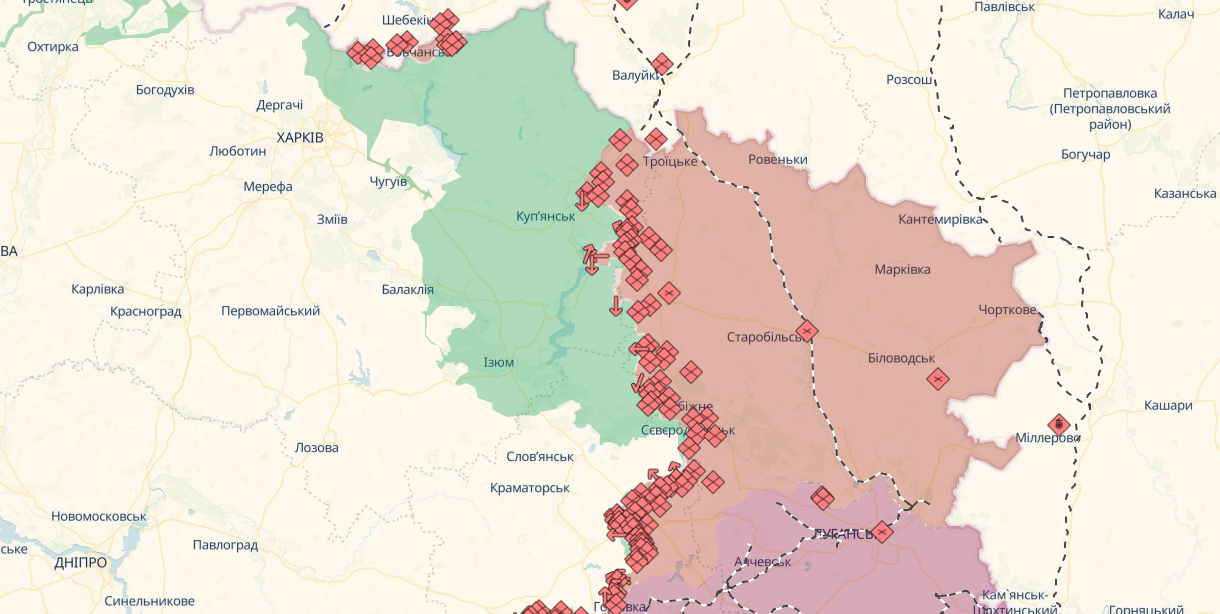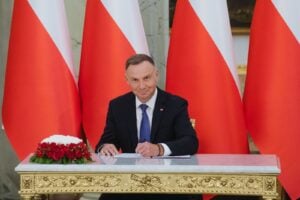The Problem of Kupyansk and the East: Russians Want to Enter the Operational Space Before Negotiations
13 November 2024 08:54 OPINION
OPINION
Kyrylo Danylchenko, military expert
Russians are continuously attacking in several areas of the frontline:
- along the Marnohrad-Selidove line;
- pushing a line north and west from Vuhledar to Kurakhove;
- approached the outskirts of Kupyansk;
- they are covering Chasiv Yar;
- fierce street battles are taking place in Toretsk (although the Defense Forces are conducting frequent counterattacks and the situation is stable);
- the third Russian counterattack in the Kursk region has begun.
The enemy has the initiative – they have an advantage in the number of shells (over 100 mm) per day, air sorties, cast iron, and OTRK.
New “infiltration” tactics and steady progress of the aggressor
In principle, offensive actions have been going on since the spring of 2024 – continuous assaults and attacks that have cost the aggressor tens of thousands of lives and pieces of equipment. As this article was being written, the Russian offensive on the Zaporizhzhia direction has begun.
At the same time, there are no special human waves, no overwhelming manpower advantage along the entire line.
However, due to the fact that the enemy has fenced off the Dnipro near Kherson and along the line of islands, stabilized the Kursk direction by deploying conscripts and the Korean contingent, and limited operations near Kharkiv, they can operate and build up forces here and now.
The infiltration tactic is working: small groups occupy buildings, accumulate in plantations, circle the strongholds, and land from turtle tanks, motorcycles, and buggies. They create a local advantage along the line of observation posts by overrunning them with armored troops or small groups, then squeeze the garrisons of the strongholds with artillery fire in dugouts and basements, and then block and storm them.
Sometimes, a battalion-level group supported by 6-7 tanks and armored personnel carriers conducts simultaneous assault operations in each direction. These are not divisions running after their own dead, as our media often portray.
Follow us on Telegram: the main news in brief
Pressure on the economy and strategic threat to industrial regions
Strategically, the aggressor’s goal is the same: to withdraw from the agglomerations of eastern Ukraine, where it is difficult, inconvenient and bloody for them to fight.
The threat to Pokrovsk is its coal mines and raw materials for coking, which may affect metal production in the future (we are talking about a drop in production and a rise in price due to imports).
Naturally, the metal has little correlation with arms production for Ukraine; the million shells promised by the EU have almost been delivered, Danish and American programs for the Ukrainian military-industrial complex are working, as is the coalition of drones, but this puts pressure on the economy and the currency.
Plus, it is the shortest way to enter the operational space from the web of villages, industrial plants, and mines, with increasing pressure, for example, on Pavlohrad. It is clear that the two months of fighting in Selidove gave us time to prepare the defense of the agglomeration, but the problem is both people and ammunition, not just engineering barriers.
The threat to Kupyansk and the bridgehead across the river, which the enemy has cut into two halves, is a war for initiative and logistics routes. Either we threaten Svatove and the junction in Starobilsk, or they will eliminate the bridgehead. It is likely that in a matter of weeks the assault on Kupyansk-junction will begin from three sides.
Coverage of the “old” defense line at Kurakhove – from the north, from Hirnyk, and from the south, in order to take fire control of the road west of Zaporizhzhia, so as not to fight against a heavily fortified “ATO” area, like Maryinka and Avdiivka. At the time of writing, Kurakhivka, Vovchenka, and Illinka remain in the gray zone.
The enemy’s progress is small, given the length of the front and the depth of the breakthrough, but it is stable. The same aggregate plant in Vovchansk that we cleared was the target of counterattacks, it was hit by KABs and Russian assault groups entered again, having already put a company on mines and under the shelling.
The reason for the successes on the surface is that since leaving Kherson, the enemy has put the economy on a military footing, widely used marching replenishment, civilian construction workers and mobile brigade workers in the second and even first line, increased production of KABs, attack UAVs, and imported millions of shells from Iran and North Korea. At that time, we were slowly adopting a law on strengthening mobilization for several months, and we still have no industrial mobilization, and “children” aged 18-25 do not even undergo basic training.
The Russian tactics of mechanized assaults have been replaced by constant pressure on the system of observation posts and eyes with the help of KABs, flying drones, massing of forces and means for landing (the same turtle tanks that distribute electronic warfare, motorcycles for quick breakthroughs and even the supply of mines).
The enemy’s goal is not (only) territory
The enemy adapts, changes, and tries to take as much territory as possible before possible peace negotiations. But in reality, there are no regional borders or red lines in this war.
In 2022, we did not rush to the South Ukrainian Nuclear Power Plant and the Zhytomyr highway near Kyiv to take the waste heaps and mining district centers.
This war is not about territory at all, although statements about territory are heard regularly.
Even if we had driven Moscow out of Crimea in a counteroffensive in 2023 (although this was never the goal, it would have been nice if we had reached Berdiansk then), the need to keep hundreds of thousands of people in the field on a 1300 km front, supply them with weapons and ammunition, and lose people to mines and missiles would not disappear.
And with Trump coming in and talking about negotiations, we have to stop the enemy’s offensive and stabilize the line before diplomacy can work. Because if this does not happen, why should Russia stop at all?
Follow us on Telegram: the main news in a nutshell
Author: Kyrylo Danylchenko, military expert









